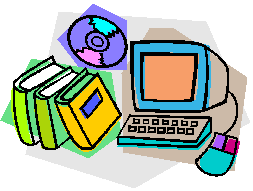
LiLI Databases

![]() The
LiLI (Libraries Linking Idaho) Database project, LiLI-D, is a cooperative effort
between the Idaho Commission for Libraries and the Idaho library community to improve
library services statewide. The LiLI Databases are indexing and
abstracting services which provide the citizens of Idaho with free, full-text
coverage for many of the periodicals they index.
The
LiLI (Libraries Linking Idaho) Database project, LiLI-D, is a cooperative effort
between the Idaho Commission for Libraries and the Idaho library community to improve
library services statewide. The LiLI Databases are indexing and
abstracting services which provide the citizens of Idaho with free, full-text
coverage for many of the periodicals they index.
This LiLI project is funded from the Idaho Commission for Libraries' budget and the Public Schools budget, with support from the Legislature and the Governor. The current LiLI-D contract is with EBSCO, ProQuest and eLibrary (owned by ProQuest). The databases they provide are described below.
EBSCO offers a variety of databases including:
 General Information --
General Information --
Designed specifically for public libraries, MasterFILE Premier is EBSCO's answer to the Wilson Readers' Guide to Periodical Literature. It provides full-text for more than 2,000 periodicals and indexes an even greater number. Additional full-text resources include reference books, biographies, primary source documents, and images.
Funk & Wagnall's New World Encyclopedia provides over 25,000 entries on a variety of subjects, while EBSCO Animals consists of full-text records describing the nature and habitat of familiar animals. Both of these encyclopedias are useful for junior high through adult level readers.
 Students'
Information --
Students'
Information --
High school students are served by MAS Ultra - School Edition, a subset of MasterFILE Premier, and TOPICSearch, a current events database especially useful for research in writing reports. Middle Search Plus, designed for middle and junior high school research, and Primary Search, for elementary students, contain reading level indicators (Lexiles) for full-text articles.
Middle Search Plus, Primary Search, EBSCO Animals, Funk & Wagnall's New World Encyclopedia, and the Image Collection from MasterFILE Premier may all be searched through Searchasaurus. Searchasaurus is not a database itself but is instead a graphic, kid-friendly interface to these databases. What is the advantage of using Searchasaurus? In addition to pulling together several databases, the search options are reduced to limit confusion for novice searchers. Children will find searching it more like playing a game, and even adults may appreciate the simpler format.
 Scholarly
and Professional Information --
Scholarly
and Professional Information --
Academic Search Premier is the world's largest academic multi-disciplinary database; it provides full-text for nearly 4,000 scholarly periodicals. Other academic databases include ERIC, Professional Development Collection (both indexing education journals), Religion and Philosophy Collection, Psychology and Behavioral Sciences Collection, and Fuente Academica (scholarly Spanish-language journals).
Business Source Premier provides full-text for nearly 3,000 scholarly business journals in the world's largest business database. Other business-related databases include Computer Source, Corporate ResourceNet, and Regional Business News.
One of the strengths of the EBSCO collection is its variety of medical and health-related databases. Health professionals will want to use MEDLINE (the most comprehensive of the medical databases), Biomedical Reference Collection: Basic, CANCERLIT, and Medic Latina (a Spanish language collection of medical research journals). There are two nursing databases: Health Source: Nursing/Academic Edition and Nursing and Allied Health Collection: Basic. Clinical Pharmacology provides access to up-to-date information on a variety of drug products and may be used by both professionals and patients. Health Source - Consumer Edition covers a broad spectrum of health and nutrition topics. Alternative health treatments are covered by Alt HealthWatch.
Other databases include Military and Government Collection, Newspaper Source, Knight Ridder Collection (newspapers) and Agricola (agriculture and related topics).
 NoveList
K-8 and NoveList are readers' advisory tools, useful to both librarians
and the public in finding appropriate fiction. You can search for authors,
titles, series and genre; you can describe plots to get a list of titles and choose
an age level. Award winners can also be found by going to "Best Fiction".
New features appear each month on the home page.
NoveList
K-8 and NoveList are readers' advisory tools, useful to both librarians
and the public in finding appropriate fiction. You can search for authors,
titles, series and genre; you can describe plots to get a list of titles and choose
an age level. Award winners can also be found by going to "Best Fiction".
New features appear each month on the home page.
 The Idaho Commission for Libraries also makes available the BigChalk databases, designed
for K-12 students. Under the terms of the ISL contract, these two databases
are only accessible to school library accounts. These databases are a rich
source of information for students at all levels. With BigChalk Library,
students will find more than 2,200 magazines, newspapers, reference books, and TV,
radio, and government transcripts - plus thousands of maps, pictures, and streaming
audio and video. Add-on collections include Time/Life Photo Archives and historical
newspapers.
The Idaho Commission for Libraries also makes available the BigChalk databases, designed
for K-12 students. Under the terms of the ISL contract, these two databases
are only accessible to school library accounts. These databases are a rich
source of information for students at all levels. With BigChalk Library,
students will find more than 2,200 magazines, newspapers, reference books, and TV,
radio, and government transcripts - plus thousands of maps, pictures, and streaming
audio and video. Add-on collections include Time/Life Photo Archives and historical
newspapers.
With more than 35 reference books, 5,000 maps, and 400,000 pictures and images, BigChalk Elementary is ideal for primary school-age researchers. Users will have access to such resources as Ranger Rick, Cobblestones, USA TODAY, Sports Illustrated for Kids, Time for Kids, and much more. Also accessible are over 100 hours of audio/video content including animation, film reels, and audio clips. Young patrons can easily navigate and manage the search results - they can even limit searches by reading level (Lexile score).
 ProQuest
Newsstand includes nineteen national newspapers such as The New York Times,
USA TODAY, The Wall Street Journal, The Atlanta Journal/Constitution, Barron's,
The Boston Globe, The Guardian, Christian Science Monitor, and The Washington
Post. Researchers can find the information they need quickly because of
the database's detailed indexing. It covers not only complete bibliographic
information but also subjects, companies, people, products, and geographic areas.
Archival coverage starts in January 1995 for most papers and reaches as far back
as 1982 for others.
ProQuest
Newsstand includes nineteen national newspapers such as The New York Times,
USA TODAY, The Wall Street Journal, The Atlanta Journal/Constitution, Barron's,
The Boston Globe, The Guardian, Christian Science Monitor, and The Washington
Post. Researchers can find the information they need quickly because of
the database's detailed indexing. It covers not only complete bibliographic
information but also subjects, companies, people, products, and geographic areas.
Archival coverage starts in January 1995 for most papers and reaches as far back
as 1982 for others.
Click the arrow below to continue to the next page